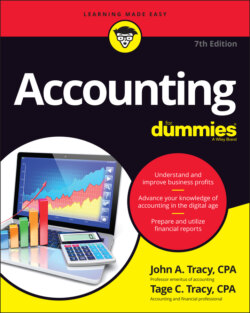Читать книгу Accounting For Dummies - John A. Tracy - Страница 29
Reporting profit and loss
ОглавлениеEveryone (including managers, lenders, and owners) is interested in whether the business enjoyed a profit or suffered a loss for the year. Suppose you have in your hands the balance sheet of a business showing the end of last year and the end of the year just ended. You can calculate profit or loss for the most recent year by computing the increase in retained earnings and adding the amount of distributions from profit during the year. Suppose the business’s retained earnings increased $5.0 million during the year and it paid out $2.0 million cash from profit to its owners. Therefore, its profit for the year is $7.0 million.
Oh, you want to know its revenue and expenses for the year — not just the profit for the year. In fact, the standard practice in financial reporting is to present a financial statement that discloses the total revenue and total expenses for the period and ends with the profit (or loss) on the bottom line of the statement. The income statement summarizes sales revenue and other income, which are offset by the expenses and losses during the period. Deducting expenses from revenue and income leads down to the well-known bottom line, which is the final net profit or loss for the period and is called net income or net loss (or some variation of these terms). Alternative titles for this financial statement are the statement of operations and the statement of earnings. Inside a business, but not in its external financial reports, the income statement is commonly called the P&L (profit and loss) report.
Of course, the bottom line of the income statement should be the same amount that could be computed by adding the change in retained earnings and distributions to owners during the year from the profit.
